"This broken country extends back from the river for many miles and has been called always be Indian, French voyager and American trappers alike, the Bad Lands."
North Dakota
Those who make it past the wonders, national parks, wilderness lands, and wonderlands that lie in every direction of North Dakota are few and far between. To go so far out of the way for a single, small national park is not something many consider. Truth be told, there are so many options that Theodore Roosevelt National Park simply gets overlooked - and that's a shame.
Theodore Roosevelt National Park encompasses much of the North Dakota Badlands, not to be confused with Badlands National Park in South Dakota. Both areas are similar in appearance, however, the South Dakota Badlands are much larger and slightly more rugged.
But first, who is this Theodore Roosevelt guy, and why does he have a national park named after him?
The Colonel

When most think of Theodore Roosevelt the first thing that comes to mind is a flash of teeth and the phrase; "walk softly and carry a big stick." Although these thoughts are synonymous with the man, he is much, more than a smile and a witty saying.
The Colonel, as he preferred to be called (over Mr. President) was a soldier, Nobel Peace Prize winner, statesman, vigilante, conservationist, hunter, explorer, author, rancher, philosopher, and family man, are just a few professions that could be used to describe Roosevelt. He was an extraordinary man who led an extraordinary life. A life that sounds like it is straight out of a fiction book, a life of triumphs and contradictions, a life of love and loss.
I could go on forever about TR, and his nearly endless list of accomplishments, but here are some of his most notable contributions:
- Set aside some 200 million acres of protected lands, including National Parks, wildlife sanctuaries, bird sanctuaries, and national forest.
- The Pure Food and Drug Act, making inspection and safety checks on food and drugs. A precursor to today's FDA
- Fought for civil reform, labor laws, and women's rights
- First American recipient of the Nobel Peace Prize, awarded after Roosevelt arbitrated the end of the Russo-Japanese War
- Started the Panama Canal
After the death of his first wife, Alice Lee, in 1884, Roosevelt took a sabbatical from the New York state assembly and purchased $50,000 (a tremendous amount for the time) worth of cattle to start a ranch in the Badlands of North Dakota.
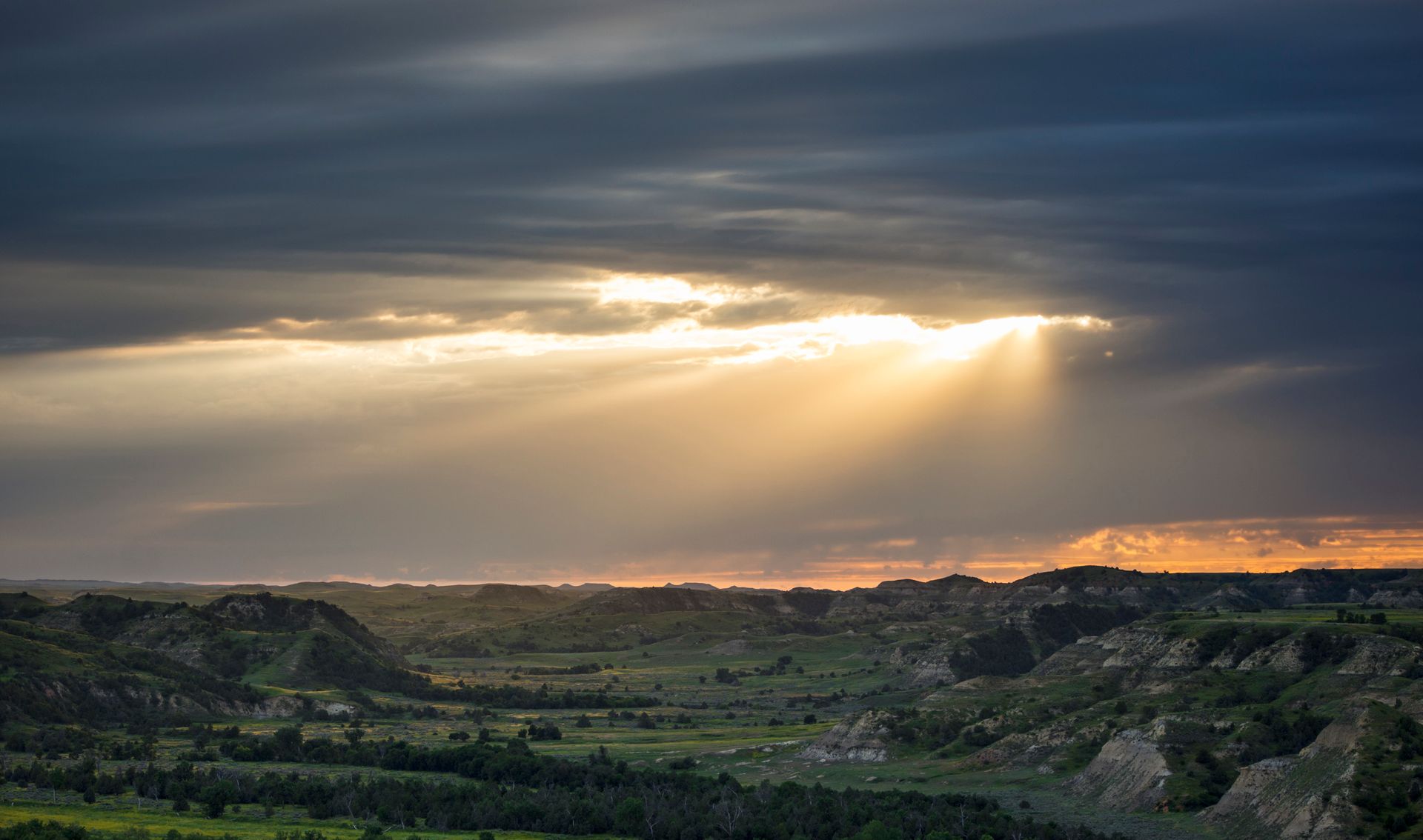
Instantly falling in love with the land, Roosevelt spent three years, off and on, writing and hunting out of his home, the Elkhorn Ranch.
While in the Badlands, Roosevelt came across many characters and stories. From wanting to join a vigilante group called "the Stranglers", to getting into fights at saloons, to having an interesting relationship with the "Emperor of the Badlands", Antoine-Amédée-Marie-Vincent Manca Amat de Vallombrosa, Marquis de Morès et de Montemaggiore, yes, that was his name . Roosevelt himself was convinced that his time in the west was directly responsible for his presidency, he once said; "I have always said I would not have been President had it not been for my experience in North Dakota."
There had to be something about the Badlands, something..magical about it. TR stated in a letter to his sister, Bamie, "The country is growing on me more and more. It has a curious, fantastic beauty of its own."

"I heartily enjoy this life, with its perfect freedom, for I am very fond of hunting, and there are few sensations I prefer to that of galloping over these rolling limitless prairies, with rifle in hand, or winding my way among the barren, fantastic and grimly picturesque deserts of the so-called Bad Lands..."
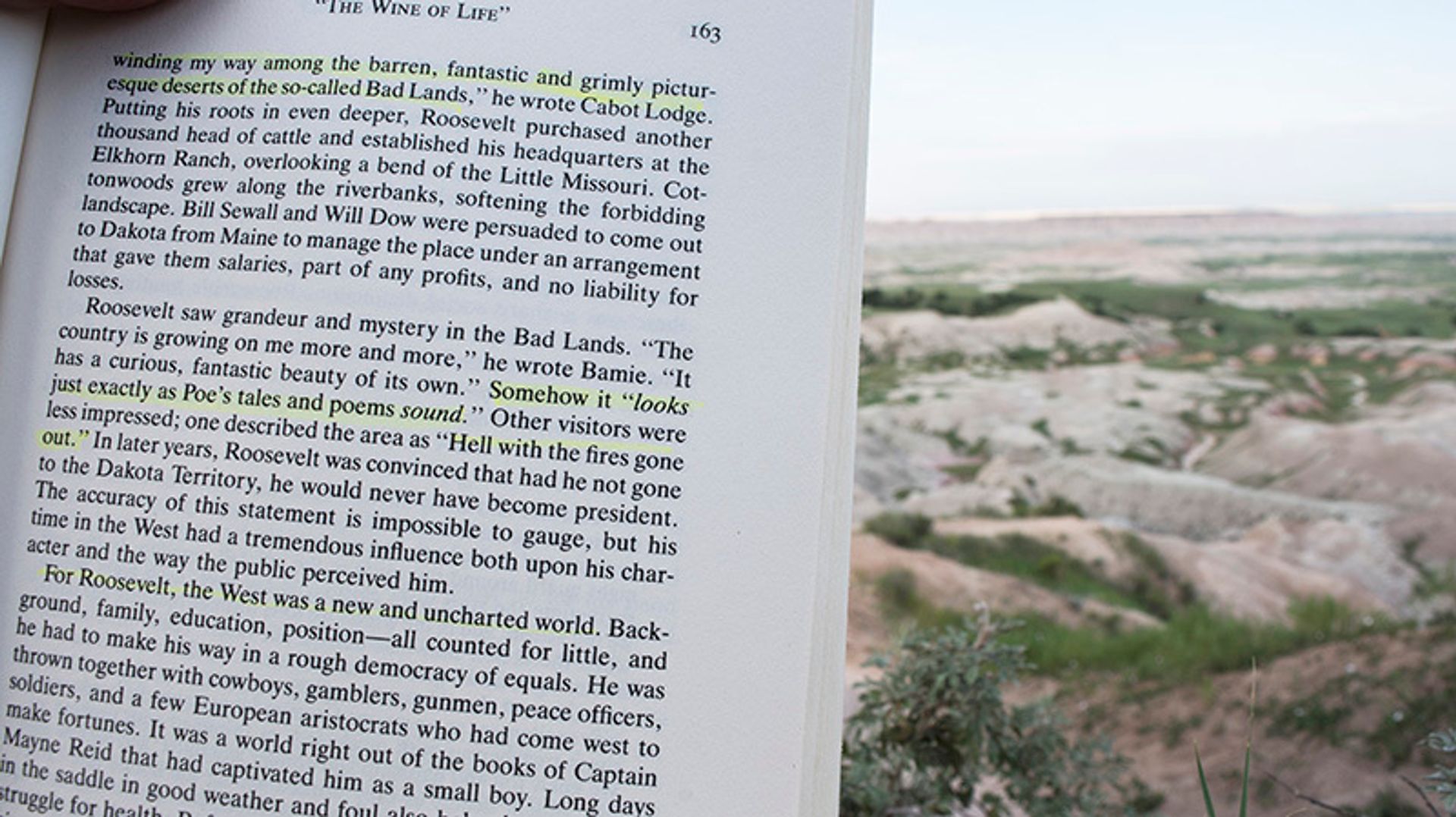
Wanting to experience the North Dakotan Badlands (after already seeing the beauty of the South Dakotan Badlands), I took a drive to the lonely national park.
Only having one night, I chose to hike Lower Paddock Creek. Nothing grueling or intense, just a nice walk through Theodore's treasured lands.
Lower Paddock Creek
To my surprise, the National Park is broken into three sections, each fairly small. I went to the Southern Section, near the wonderful town of Medora, and stopped into the visitor's center to see the rules.
Again, I was surprised to find that primitive camping is welcomed throughout the park so long as you carry a free permit! Few national parks allow this freedom, so I took advantage. After five minutes, a lovely chat with a park ranger, and $0, I was off with my backcountry permit.
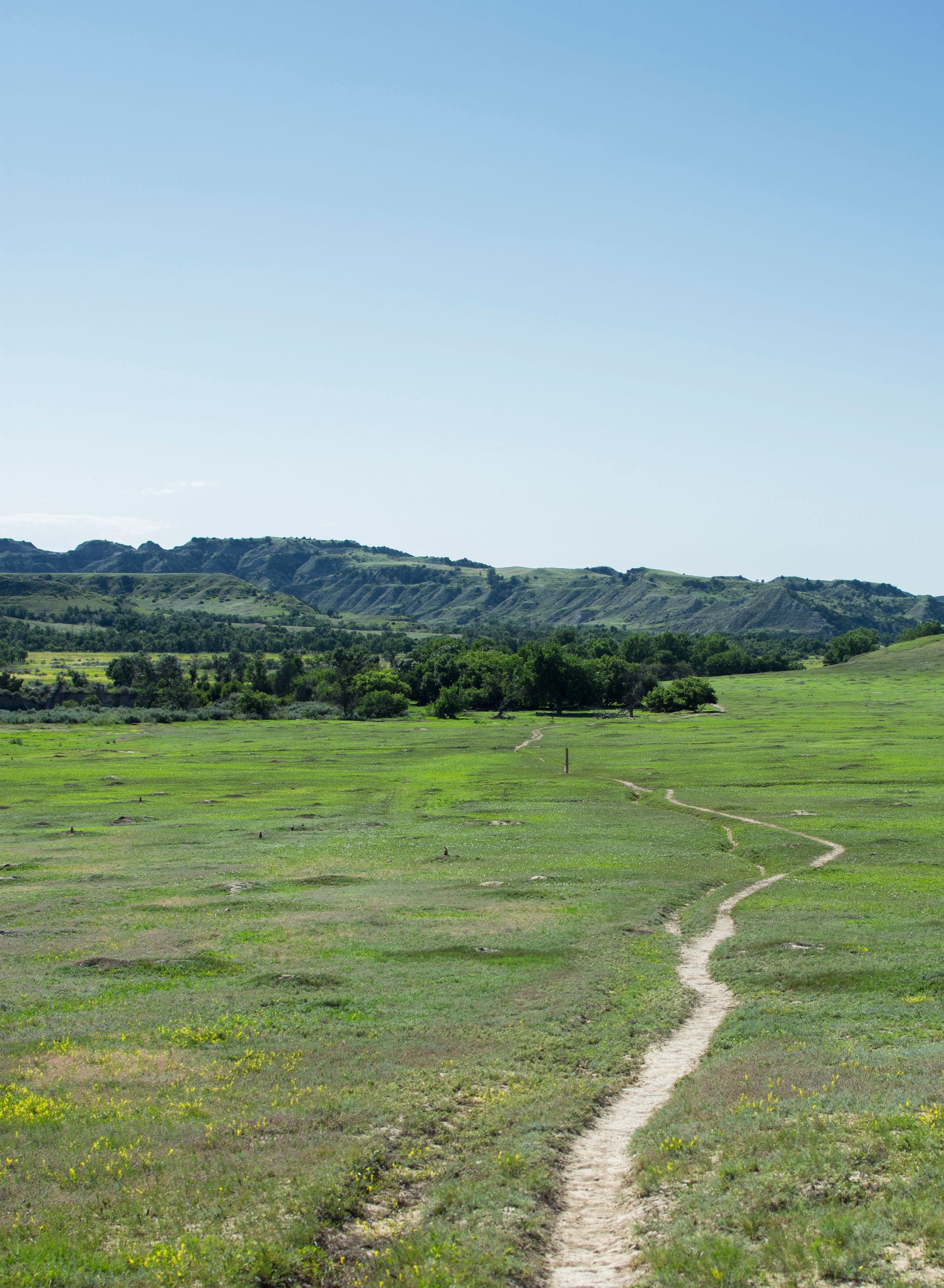
The Southern Section of the park is small compared to many other national parks. There is a great road that drives through most of the park's scenic areas (a 36-mile drive total, there and back). I wanted to walk, so I parked at the Halliday Well Parking area, just passed the Cottonwood Campgrounds.
Though the park is small, there is a ton of wildlife to be seen. As soon as I stepped out of my car, I was welcome with the cheers of a hundred prairie dogs. They occupied much of the park in what are called "prairie dog towns" but I considered them more of cities. There were hundreds of them!
Hawks circled above, waiting for an opportune time to strike, but the sentries were on their game, warning the rest when to take cover.

The trail was easy, but since the entire park is explorable, there were many branching paths. I lost the main path a few times but quickly found it again.

I was looking for a place to set up camp while trying to follow the rules. 200 yards from the path, out of sight, and away from the little water in the park. I found a dream spot with a great overlook on one of the many hills.
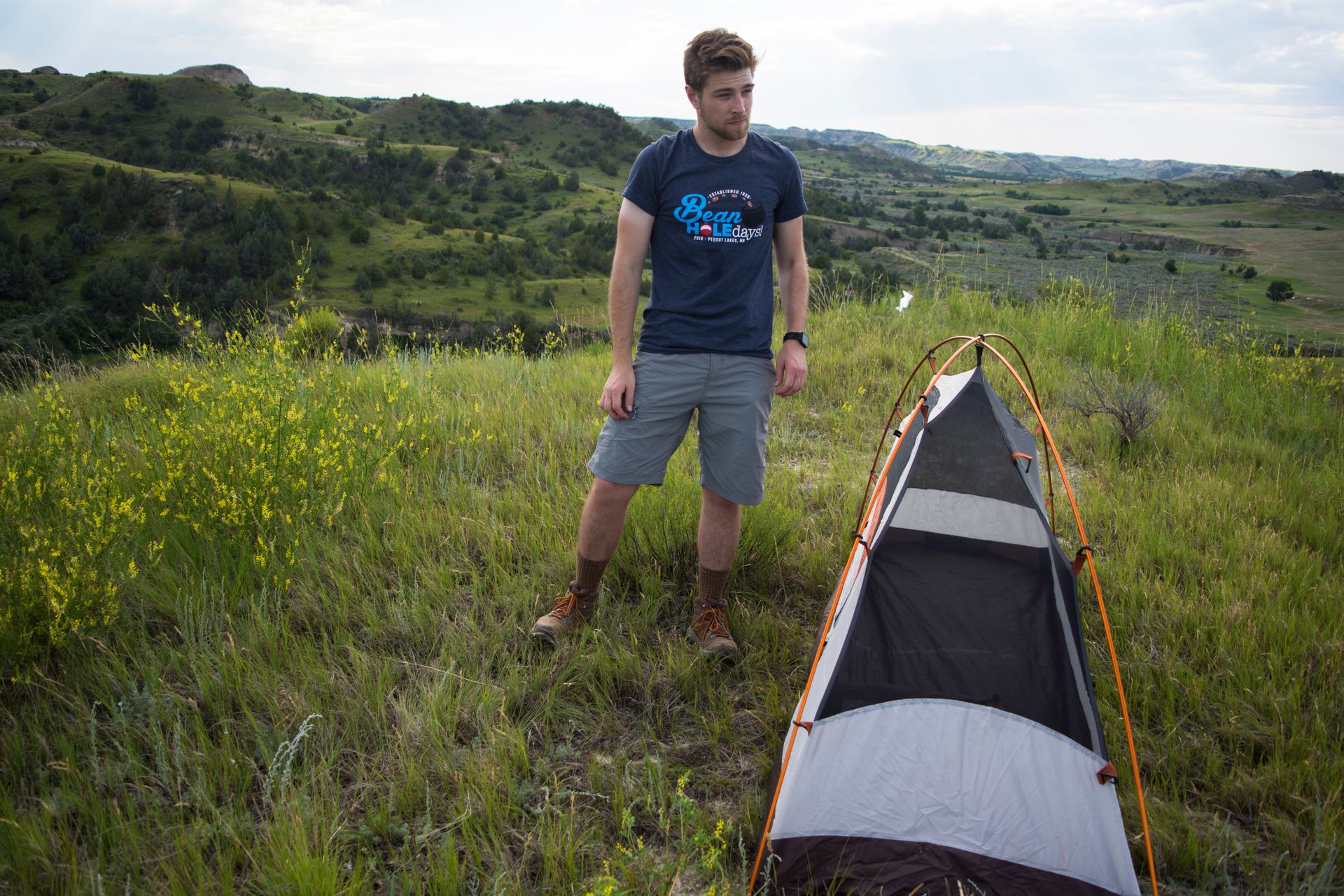
"After nightfall the face of the country seems to alter marvelously, and the clear moonlight only intensifies the change. The river gleams like running quicksilver, and the moonbeams play over the grassy stretches of the plateaus...The Bad Lands seem to be stranger and wilder than ever, the silvery rays turning the country into a kind of grim fairyland."
Along with the prairie dogs, large herds of bison wandered throughout the park. From my lookout, I was able to watch a particular herd from a safe distance.

"Now and then we hear the wilder voices of the wilderness, from animals that in the hours of darkness do not fear the neighborhood of man: the coyotes wail like dismal ventriloquists, or the silence may be broken by the snorting and stamping of a deer."
The trail was only three miles, six total after walking back, but I saw more wildlife than any other park I have ever been to. With that being said, remember to keep your eyes opened and keep your distance. The tall grass can hide even the largest of Bison.
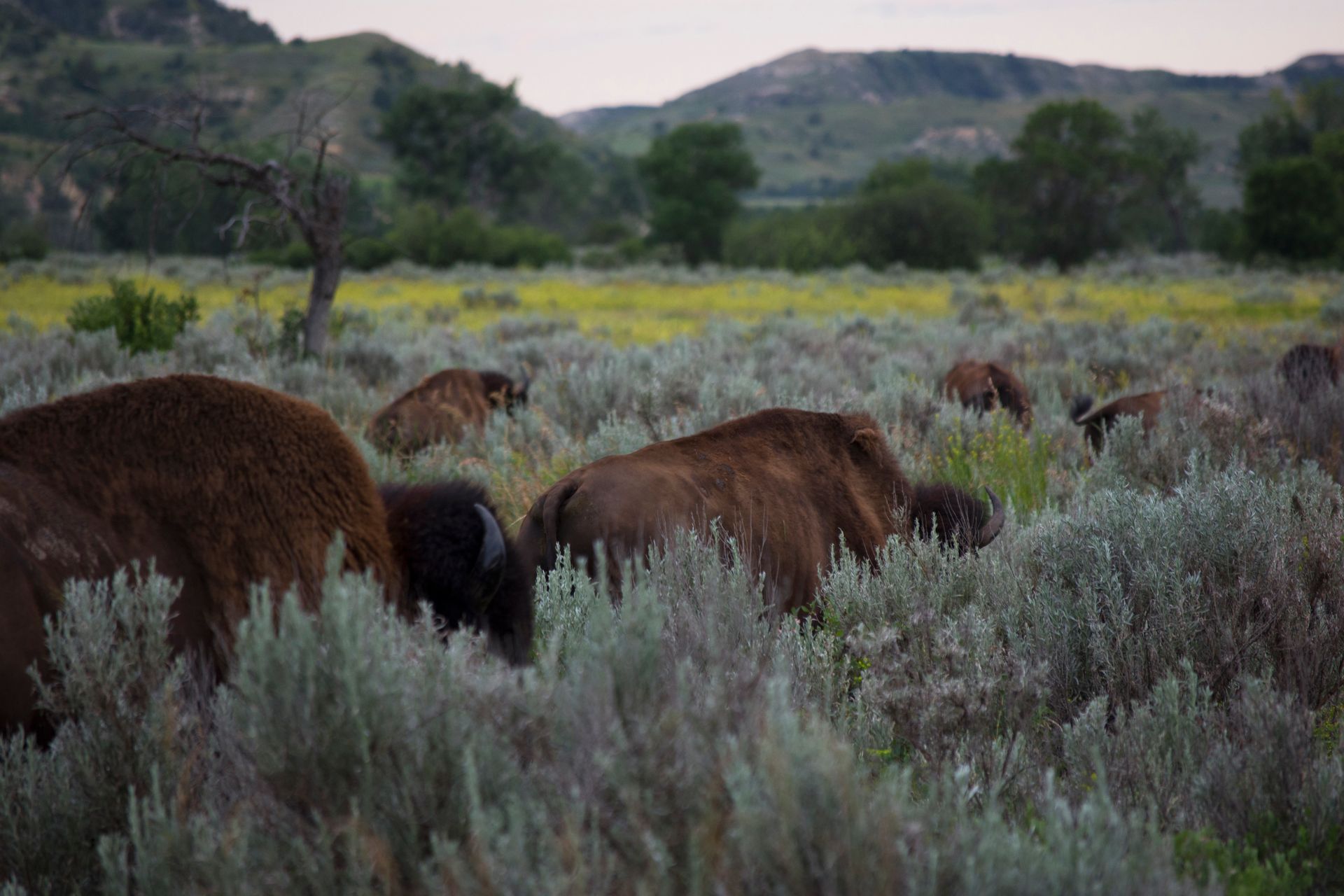
"Nowhere, not even at sea, does a man feel more lonely than when riding over the far-reaching, seemingly never-ending plains; and after a man has lived a little while on or near them, their very vastness and loneliness and their melancholy monotony have a strong fascination for him."